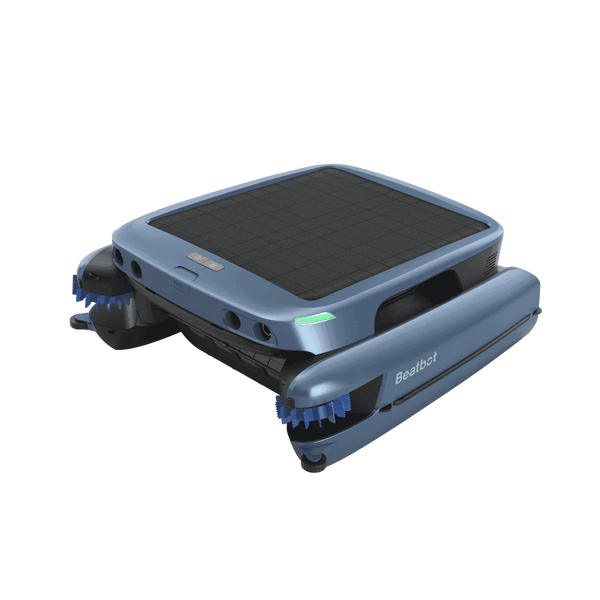Understanding The Cleaning and Storing Pool Floats
2024-04-30
Pool floats offer great enjoyment and safety in swimming environments, but maintaining their hygiene and usability is crucial. Proper cleaning and storage are essential. These steps are necessary to avoid bacterial growth and material degradation, thereby reducing the lifespan of these valuable leisure items. This guide delves into the essential methods and tips for cleaning and storing pool floats effectively, ensuring their safety and hygiene for every use.
Table of content
Essential Cleaning Tips for Pool Floats
Initial Rinse and Prep
Begin by thoroughly rinsing your pool floats with clean, fresh water as soon as they are no longer in use. This immediate action helps to remove harmful chemicals like chlorine and salt, as well as organic matter like leaves or sunscreen, which can degrade the float's materials over time.
Applying Cleaning Solutions
Use a gentle cleaning solution—preferably a mild dish soap and warm water mix. Use a soft cloth or a sponge to scrub the entire surface of the float gently. This method removes any remaining contaminants without harming the float's material.
After cleaning, rinse the float thoroughly to remove any soap residues, as these can attract dirt and encourage bacterial growth.
Deep Cleaning Techniques for Pool Floats
Addressing Stubborn Stains
A specialized vinyl cleaner can be used for tougher stains, such as those from algae or mold. These cleaners are formulated to deal effectively with stubborn stains without damaging the float's material.
Always follow the product's instructions to avoid any accidental damage.
Spot Testing Cleaners
Before applying any cleaner over large areas, it's wise to perform a spot test. Apply a small amount of the cleaner on a hidden section of the float to see if there are any adverse reactions.
If the material reacts poorly, such as discoloring or becoming brittle, discontinue use immediately.

Drying Pool Floats Properly
Avoiding Direct Sunlight
While it might seem convenient to dry the float in the sun, prolonged exposure to UV rays can significantly shorten the life of the material by causing it to crack or fade. Instead, hang the float in a shaded, well-ventilated area to air dry.
Ensuring Complete Dryness
Ensure the float is fully dry before you put it away to avoid the growth of mold and mildew. Depending on the humidity and temperature, this may leave it out to dry for several hours. Inflate the float slightly to allow air to circulate inside, promoting even drying.
Correct Deflation and Folding Techniques
Slow Deflation
Take care to deflate your pool floats slowly and gradually. Rapid deflation can unnecessarily stress the seams and valves, potentially leading to leaks or damage.
Proper Folding and Rolling
Once deflated, loosely fold or roll your float. Avoid tight folds, which can stress the material and lead to permanent creases or even tears. Instead, gently roll the float into a cylindrical shape or loosely fold it, paying attention to avoid sharp bends.
Storing Pool Floats Safely
Choosing the Right Storage Location
Store your floats properly where temperature and humidity levels are regulated to prevent damage to the materials. Avoid places like attics or sheds, where temperature fluctuations are common.
Protecting from Pests and Damage
If using a storage bin, ensure it's clean and dry. Consider placing silica gel packets inside the storage area to help control moisture, and make sure that the storage space is free from rodents or insects that could chew on or nest in the material.
Regular Maintenance for Pool Float Longevity
Inspection and Minor Repairs
Regularly inspect your pool floats for any signs of damage, such as small tears or punctures. Most minor damage can be repaired at home using patch kits designed for the material of your float.
These kits typically include patches and a special adhesive that works underwater.
Seasonal Checks
Before and after the swimming season, give your pool floats a comprehensive check. Look for any issues that may have arisen during the previous season or storage and address them promptly.
This proactive maintenance helps extend the life of your floats, ensuring they remain safe and enjoyable for future use.

FAQs About Cleaning and Storing Pool Floats
What is the best way to remove oil stains from pool floats?
To tackle oil stains, dab a bit of degreasing dish soap onto the stain and gently scrub with a soft sponge or cloth. Let it sit for a few minutes, then rinse thoroughly with water. Repeat if necessary, and completely dry the float to prevent any residue.
Can I leave my pool floats inflated all summer?
Leaving pool floats inflated throughout the summer is not recommended, especially if they are not used regularly. Constant exposure to sun and environmental elements can degrade the material. Deflate and store them when not in use to extend their lifespan.
How often should pool floats be cleaned to prevent mildew?
To prevent the buildup of mildew and bacteria, clean your pool floats at least once every two weeks during heavy use, and always ensure they are clean and thoroughly dry before off-season storage.
Employing high-end pool robots like the Beatbot AquaSense 2 Pro can enhance overall pool cleanliness, which in turn helps maintain the condition of your pool floats. Regular rinses with fresh water and the use of appropriate cleaning agents will keep your floats in excellent shape for their next use.
Are there any products I should avoid using on my pool floats?
Steer clear of strong chemicals like bleach, abrasive cleaners, or ammonia-based solutions, which can harm the float's material. Opt for gentle soaps or cleaning products specially formulated for your float's specific material.
What should I do if my pool float starts losing air faster than usual?
Check for any small punctures or valve issues. You can use soapy water to brush over the surface — bubbles will form where air is escaping. Most minor punctures can be repaired with a patch kit. Ensure the float is dry before applying any patch.
How can I keep my pool floats from fading in color?
Limiting the time the floats are exposed to direct sunlight is an effective method to prevent fading. Store them in a shaded area or cover them after each use. Also, you can use UV protectant sprays for plastics to solve color fading problems.
Relative Blogs
About the author



















